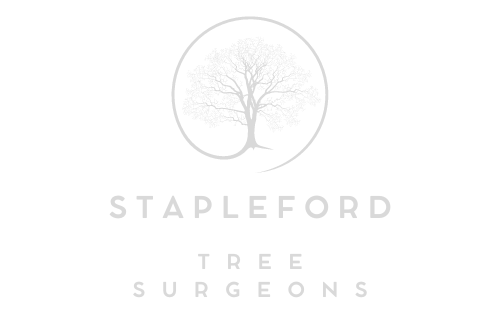Can Crown Reduction Fix Leaning Trees?
Introduction
A leaning tree can be a cause for concern—both for the safety of people nearby and the health of the tree itself. It’s a common sight in both urban and rural landscapes, and property owners in Stapleford, Nottingham often wonder whether something can be done to correct or manage it. One technique that often comes up is crown reduction. But can reducing the size of the crown actually fix a leaning tree?
At Stapleford Tree Surgeons, we specialise in practical, science-based solutions for tree issues, including structural instability. In this article, we explore the role crown reduction plays in dealing with leaning trees, when it’s appropriate, and what other methods may be required to ensure both safety and long-term stability.
Understanding Why Trees Lean
Before deciding how to manage a leaning tree, it’s important to understand the reason behind the tilt. Not all leans are dangerous, but some can indicate deeper structural issues.
Common Causes of Tree Leaning
- Wind damage: Persistent strong winds can gradually push a tree off-centre
- Root problems: Decay, poor anchorage, or restricted growth can weaken the base
- Soil movement: Erosion or saturation can cause instability
- Natural growth patterns: Some trees lean towards sunlight (phototropism)
Understanding the cause helps determine whether crown reduction is suitable or if additional interventions are needed.
What Is Crown Reduction?
Crown reduction involves carefully cutting back the height and spread of the tree’s crown. It’s not simply lopping off branches—it’s a targeted process that reduces weight and wind resistance without harming the overall health of the tree.
Objectives of Crown Reduction
- Decrease overall mass of the canopy
- Improve structural balance
- Reduce the risk of windthrow
- Lighten load on weakened roots or trunk
It’s particularly useful when managing mature trees in built-up areas like Stapleford, Nottingham, where space and safety are key considerations.
Can Crown Reduction Help a Leaning Tree?
When It Works
Crown reduction can offer short- to medium-term improvement in stability for leaning trees in certain situations:
- The lean is due to weight imbalance in the canopy
- The root system is intact but strained
- The tree has not uprooted or cracked at the base
Reducing the mass in the crown helps shift the centre of gravity and ease the pressure on the root zone.
When It’s Not Enough
However, crown reduction is not a one-size-fits-all fix. It’s unlikely to correct the lean completely and may be insufficient where:
- The tree is uprooting or leaning more over time
- Roots are significantly decayed or damaged
- The trunk shows signs of splitting or hollowing
In these cases, crown reduction may be combined with bracing, soil management, or even removal, depending on the risk involved.
Additional Support Techniques
Cabling and Bracing
For trees with minor to moderate lean, installing flexible cables or braces between limbs or from trunk to stake can provide stabilisation.
- Prevents further lean development
- Supports weakened junctions
- Works well in tandem with crown reduction
Soil Remediation and Root Management
In compacted or waterlogged soils, improving drainage or root aeration can help restore tree balance. Where appropriate, root pruning may also be carried out.
Professional Assessment Is Key
At Stapleford Tree Surgeons, every leaning tree is assessed with a trained eye. We look at root health, soil conditions, canopy balance, and the structural integrity of the trunk before recommending crown reduction or any other method. Our services are tailored for the local climate and species found throughout Stapleford, Nottingham.
We ensure:
- All crown work follows BS3998:2010 British Standards
- Trees retain natural shape and vitality
- Safety is prioritised without compromising tree health
Conclusion
Crown reduction can be an effective tool in managing leaning trees, particularly when weight imbalance is the root cause. It eases pressure, enhances balance, and may prevent further tilt. However, it’s not a universal solution. The cause of the lean must be properly diagnosed, and sometimes additional support or even removal is the safer path forward.
If you’re in Stapleford, Nottingham and have concerns about a leaning tree on your property, contact Stapleford Tree Surgeons. Our expert team will provide an honest, professional assessment and a solution that ensures both safety and sustainability.
Call us on: 0115 647 1191
Click here to find out more about Stapleford Tree Surgeons
Click here to complete our contact form and see how we can help with your tree’s needs.

